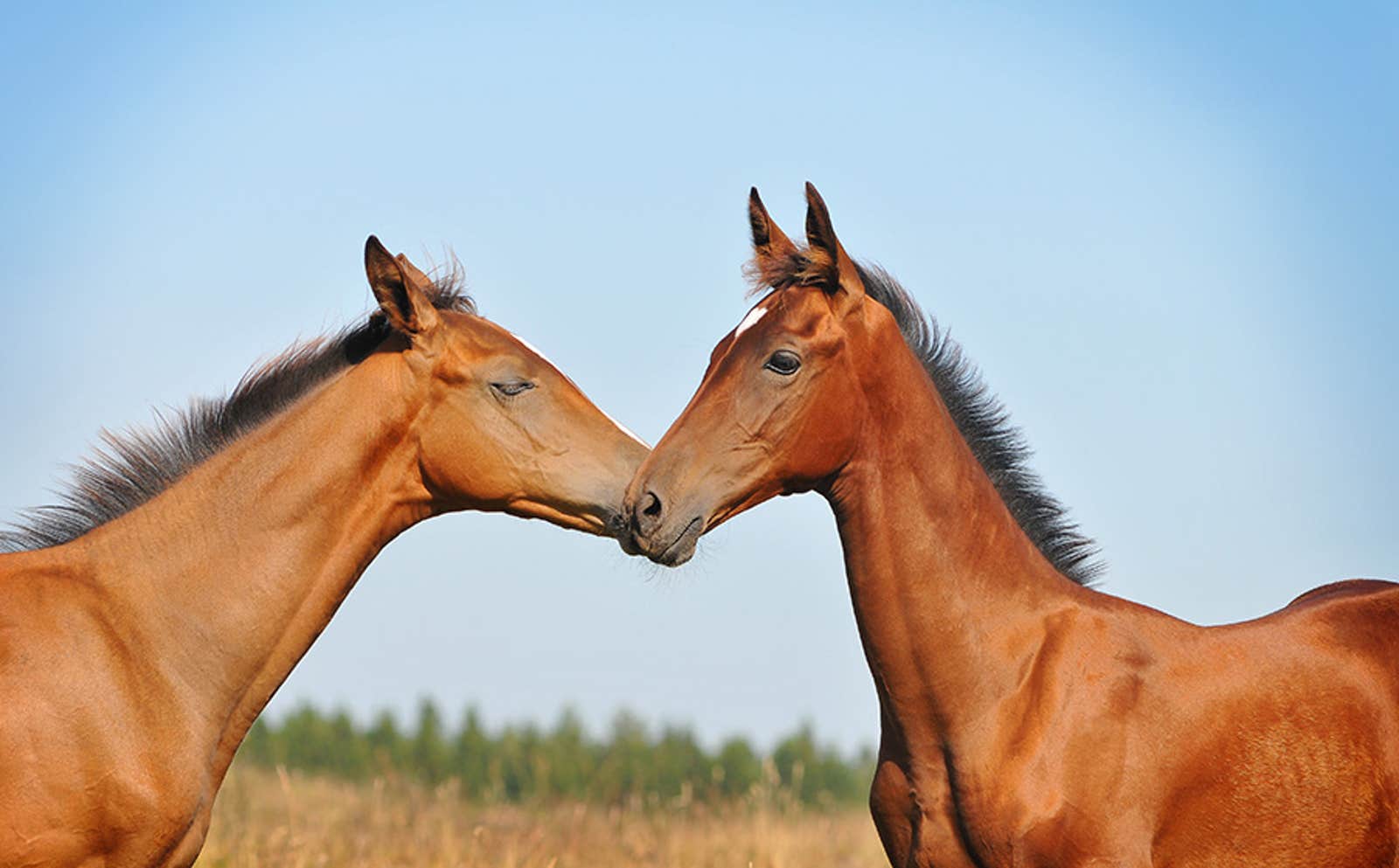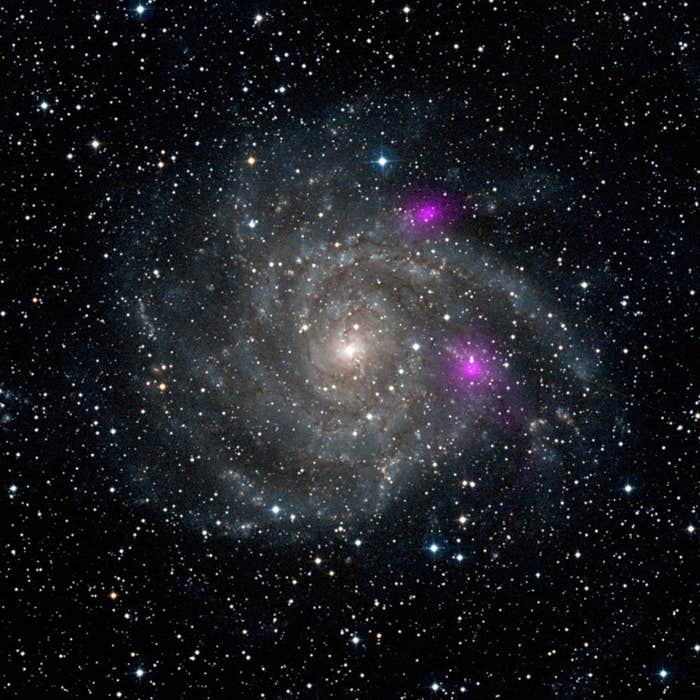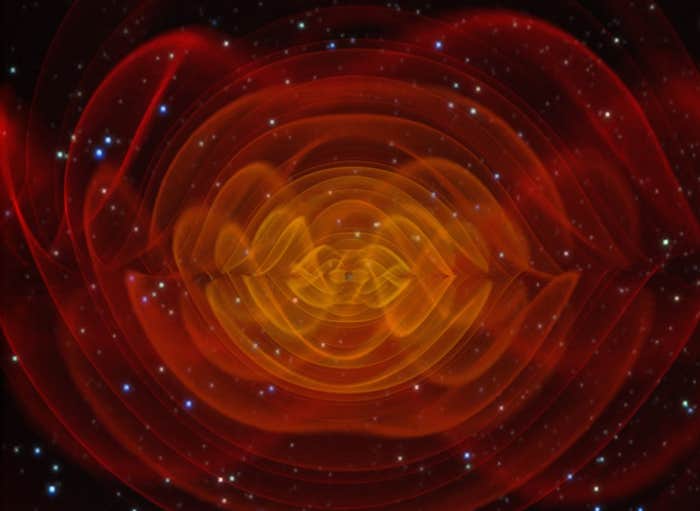The human mind has two fundamental psychological motifs. Descartes’s proclamation, “I think, therefore I am,”1 illustrates one, while Melville’s statement, “Ahab never thinks, he just feels, feels, feels,”
exemplifies the other.2 Our Rationalist inclinations
make us want certainty (objective truth), while the
Romantic in us basks in emotional subjectivity. Psychology and neuroscience recognize this distinction:
cognition and emotion are the two major categories
of mind that researchers study. But things were not
always quite like this.
Rational thought has always been treated as a product of the mind, and emotions were traditionally
viewed as belonging to the body.3 Descartes, following Plato’s lead, said that humans differ from animals
in that we have a rational mind (a soul), but are similar to animals in that we have bodily passions (emotions) that interfere with reason. Somewhere along
the way, two things happened to give us our more integrated modern view. First, we began
to consider human emotions as mental
states; and second, many began to attribute mental states, including both thoughts
and feelings, to animals. Darwin, for example, viewed emotions as “states of mind,”
some of which are shared by both humans
and other animals.4 Today, emotions are
commonly conceived of as mental states
that are felt (consciously experienced)
when well-being is affected in some way:
we feel fear when threatened, anger when
frustrated, joy when things go well, sadness
when we lose a friend or loved one, and
compassion when we see someone suffer.
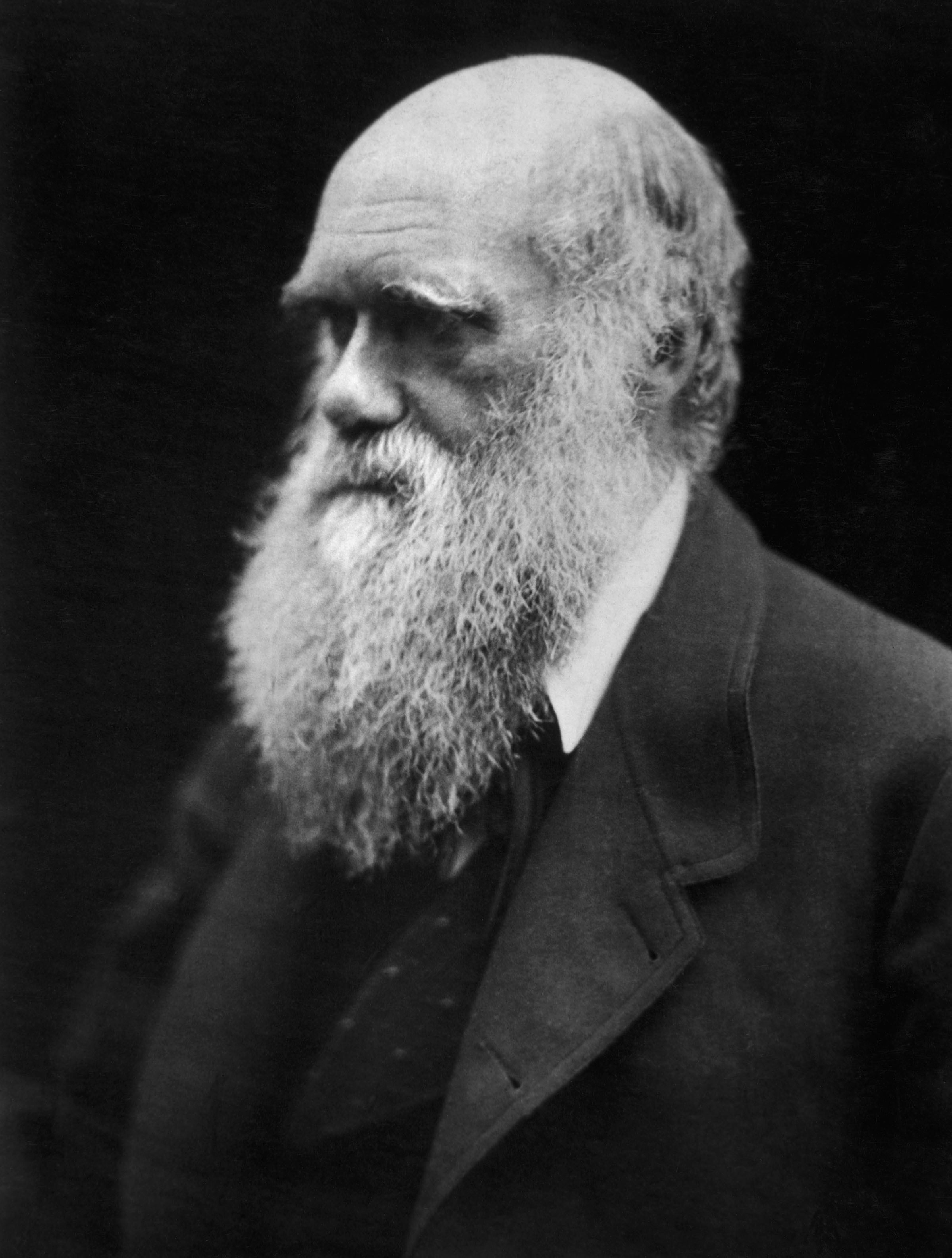
If we assume that emotions are feelings,
that feelings are states of consciousness,
and that states of consciousness are inner
private experiences predicated on the
awareness of one’s own mental activity,
questions arise about the scientific study
of the brain mechanisms underlying emotions in animals. Emotions and other states
of consciousness can—within limits and
with some difficulty—be studied in humans, but the study of consciousness in
animals is, to put it mildly, challenging.5
At the same time, due to ethical and technical limits of investigations in humans,
work on detailed brain mechanisms of
emotion depends on animal research. How
do we get around this stumbling block?6
Behaviorism, which flourished in the first
half of the 20th century, is a school
of thought in psychology that rejects the
study of conscious experience in favor of
objectively measurable events (such as responses to stimuli). Due to behaviorism’s
influence, researchers interested in emotion in animals have tended to take one of
two approaches. Some have treated emotion as a brain state that connects external stimuli with responses.7 These researchers, for the most part, viewed such
brain states as operating without the necessity of conscious awareness (and therefore as separate from feelings), thus avoiding questions about consciousness in animals.8 Others argued, in the tradition of
Darwin, that humans inherited emotional
states of mind from animals, and that behavioral responses give evidence that these
states of mind exist in animal brains.9 The
first approach has practical advantages,
since it focuses research on objective responses of the body and brain, but suffers
from the fact that it ignores what most
people would say is the essence of an emotion: the conscious feeling. The second
approach puts feelings front and center,
but is based on assumptions about mental
states in animals that cannot easily be verified scientifically.
The roots of so-called emotional behavior are so deep, so old, that it makes no sense to use a term like emotion to describe them.
When I was getting started in my studies of emotion in animals in the mid-1980s,
I adopted a third approach to try to get
around these problems.10 I treated emotions in terms of essentially non-conscious
brain states that connect significant stimuli with response mechanisms, and feelings
as conscious experiences arising from these
non-conscious brain states.11 My theory,
therefore, emphasized the importance of
feelings, but I argued that the brain mechanisms that control emotional responses
and those that generate conscious feelings
are separate. By separating processes that
non-consciously detect and respond to
significant stimuli from those that create
feelings, emotional mechanisms could be
studied in animals without having to solve
the problem of whether animals feel emotion, while at the same time honoring the
importance of feelings in the human mind
and brain.
I have used this strategy for many years
in my research on fear in animals, focusing
on the mechanisms that detect threatening
stimuli and orchestrate defensive responses to deal with the danger.12 The purpose
of this strategy has not been to deny that
feelings or other states of consciousness
exist in animals, but instead to focus research on questions that can be addressed
scientifically, regardless of how the animal consciousness debate turns out. In the
meantime, since feelings are an essential
factor in human mental life and in psychiatric disorders that afflict humans, conscious feelings can and should be studied
in humans. Further, because circuits that
operate non-consciously to control emotional responses nevertheless contribute
to feelings in humans, research on these
same circuits in animals is relevant to human feelings.
As useful as the strategy has been, there
has always been something awkward about
the scientific separation of emotion (a non-conscious response process) from feeling—the conscious experience of emotion. It
is messy, since the terms emotion and feeling are typically used interchangeably in
everyday speech. There is no requirement that scientific language conform to
lay meaning (and in fact some argue that
a language of science will replace lay
terms);13 but when the terms in question
are about mental states that we all experience and talk about, it is harder to escape
the compelling pull of the vernacular.14
This is one challenge psychology faces that
most other sciences do not.
In an effort to grapple with this terminological uneasiness, I began rethinking
the way we use words like emotions and
feelings.15 This led me to consider the natural history of what we have been calling
emotion in animals, a journey that led me
to conclude that the roots of so-called
emotional behavior are so deep, so old, that
it makes no sense to use a term like emotion to describe these behaviors in any organism, including humans. The term emotion is so intricately entwined with conscious feelings that to use it in any other
way simply invites confusion. Instead of
differentiating between emotion and feeling, I stick with the everyday meaning of the terms, using them interchangeably to
refer to the mental states that people experience when they face situations in
which survival is challenged or enhanced.
In the remainder of this essay I use the
emotion of fear as an example of the points
I want to make. I first explain the way that
I and many others have studied fear in the
laboratory, and then turn to the deep roots
of what I long called fear behavior (but
now call defensive behavior, as explained
below). I offer a different way of talking
about fear and other mental states.16 I conclude by discussing my view about what
conscious feelings are, how they relate to
non-conscious processes, and how they
come about in the brain.
A staple in laboratory studies of fear and
its underlying brain mechanisms has been
a procedure called Pavlovian fear conditioning.17 (I prefer to use the more neutral term
Pavlovian threat conditioning to circumvent
aforementioned problems associated with
discussing “fear” in animals.)18 In threat
conditioning, an insignificant stimulus,
such as a tone, occurs in conjunction with
an aversive stimulus, typically footshock.
Through this pairing, the tone by itself
eventually acquires the ability to elicit
freezing behavior (a defensive anti-predator behavior in which the animal remains
motionless for the purpose of avoiding detection or minimizing attack)19 and supporting physiological responses (such as
changes in heart rate, blood pressure, and
other autonomic nervous system adjustments) that help the organism cope with
the impending danger. Much has been
learned about the neural circuits, cells, synapses, and molecules that make it possible
for animals to learn in this way, especially
through studies of rodents (particularly
rats).20
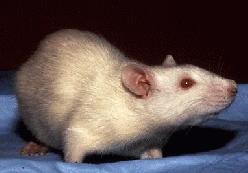
One of the advantages of Pavlovian threat
conditioning is that it can be used across
a wide range of species. Human studies cannot provide as much detail about neural
mechanisms, but have confirmed to a first
approximation that the same brain areas
and connections discovered in rats also
exist in humans.21 For example, through
studies of rats, we know much about the
various subregions of the amygdala that
receive the tone and shock, integrate them,
store a memory of the association, and use
that association to control defensive responses.22 Subregions of the amygdala are
not within the imaging resolution of currently available technology for studying
the human brain, but we assume that circuits are likely to be similar because the
basic circuitry found in rats also exists in
nonhuman primates and performs similar functions in rodents and primates.23
Invertebrates are also responsive to
Pavlovian threat conditioning.24 While
these animals have different neural circuits
than vertebrates, they offer advantages for
exploring molecular mechanisms related
to intracellular signaling cascades and
gene expression. Many of the discoveries
made in invertebrates have subsequently
been confirmed in rodents.25 And if they
apply to rodents, they likely apply to other
mammals, including nonhuman primates
and humans.
While studies of detailed brain mechanisms are not possible in humans, studies
of our species have the distinct advantage
of being able to explore conscious states.26
Still, we must be careful not to confuse
feelings with responses elicited by a threat.
When threatened by a stimulus created
through threat conditioning or by an innate threat, humans have behavioral and
autonomic nervous system responses that
anticipate the threat and help prepare the
body to cope with the danger that may ensue; further, the amygdala is activated.27
The person may feel fear, but this does not
mean that the same brain circuits create
feelings of fear.
For example, the amygdala is activated
and physiological responses are expressed
even to subliminal (non-conscious) presentations of threat stimuli.28 In these
cases, the subjects are not aware of the
stimulus and do not report any particular
feeling.29 Amygdala activation thus does
not tell us that fear is felt in a human, and
certainly does not alert us to fearful feelings in animals. Confusion results because
fearful feelings are often correlated with
these amygdala-dependent responses. But
correlation does not mean causation; we
cannot generalize from stimulus-response
mechanisms, which occur widely in animal life, to conscious feelings of fear.30
That said, amygdala-based and other defensive circuits do contribute indirectly to
feelings of fear, but feelings of fear require
more than just amygdala-driven responses
in the brain and body. My proposal is that
all organisms have the ability to detect and
respond to threats, but only organisms that
can be conscious of their own brain’s activities can feel fear.
Laboratory studies of so-called emotional behavior in animals involve tasks that
pose challenges to, or opportunities for
enhancing, well-being. Stimuli (such as
shocks, food, drink, warmth, and sexual
stimulation) are used to motivate responses
that help the animal either cope with or
benefit from the stimuli (prevent or reduce
the impact of a shock or give access to food,
drink, warmth, or sex). When humans experience these events, we can have feelings of fear (when threatened) or pleasure (when eating, drinking, having sex,
or becoming warm after being in the
cold). These behaviors and feelings are so
intertwined in us that we think of them
as one and the same: we often describe
the feelings as emotions and the behaviors
as emotional behaviors.
When descending the evolutionary
tree in search of the origins of these so-called emotional behaviors, one quickly
finds oneself jumping to lower and lower
branches, ending up at the base of the
trunk and eventually even digging down
into the roots of the tree. Every living organism, from the oldest to the most recent,
has to do these things to stay alive and pass
its genes on to its offspring. Organisms
must detect danger, identify and consume
nutrients and energy sources, balance
fluids by taking in and expelling liquids,
thermoregulate, and reproduce. You do
these things, but so do the bacterial cells
living in your lower intestine.31
This realization turns the scientific language of emotion on its head. What are
commonly called emotion functions in humans and animals are not emotional functions at all. They do not exist to make feelings. They are survival functions essential for the continued life of the individual
or the species.32 And in humans, survival
functions are sometimes—perhaps often—associated with feelings. But the systems
that underlie these functions operate independently from feelings in humans. For
example, as noted above, the circuits that
control so-called fear responses are not
themselves the wellspring of feelings of
fear. This raises the question of how feelings of fear or other emotions come about.
The problem of understanding feelings
is thus reducible to the problem of understanding consciousness. Consciousness is
unobservable except by introspection,
and attributing it to others requires a certain degree of faith in unprovable assumptions. The question is: which unprovable
assumptions are we willing to make scientifically? Because all human brains are
wired in the same way, I am on fairly safe
ground in assuming that you have the same
basic factory-installed brain functions that
I do. While the human brain is similar in
many ways to the brains of other mammals, even other vertebrates,33 it is also different in very significant ways.34 I thus
restrict my discussion of conscious feelings
to humans, which makes the problem more
manageable. Still, consciousness is a complex and contentious topic that cannot be
discussed exhaustively here. I will therefore simply summarize how I believe conscious feelings come about.
I pursued my Ph.D. working with the cognitive neuroscientist Michael Gazzaniga in
the late 1970s. Gazzaniga was famous for
his work on split-brain patients,35 in whom
the nerve connections between two sides
of the brain are surgically cut in an effort
to control otherwise intractable epilepsy.
Their misfortune has been a source of many
important discoveries about how the brain
and mind work. I will just mention one
set of findings that Gazzaniga and I made
that solidified his ideas about consciousness and that sparked my interest in understanding how the non-conscious aspects of the brain work.36
My goal is to understand how consciousness makes feelings possible.
Since typically only the left hemisphere
of the brain has the capacity for speech,
stimuli presented to the right hemisphere
of a split-brain patient cannot be talked
about. But the right hemisphere can indicate that it saw and perceived a stimulus
by using the left hand (corresponding to
the right hemisphere) to select a matching picture. For example, in one study we
simultaneously showed the patient’s left
hemisphere a chicken claw and the right
hemisphere a snow scene. The patient’s
left hand then selected a picture of a shovel. When the patient was asked why he
made this choice, his left hemisphere (the
speaking hemisphere) responded that it
saw a chicken and you need a shovel to
clean out the chicken shed.37 The left
hemisphere thus used the information it
had available to construct a reality that
matched the two pieces of information
available: it saw a picture of a chicken and
it saw its hand selecting a shovel. Given the patient’s rural background, it made
sense to him that a shovel and chicken claw
go together since a shovel could be used
to clean the chicken shed. In other studies,
by presenting commands to the right
hemisphere, we induced it to wave, stand,
or laugh, and asked the left hemisphere,
“Why did you do that?” The left hemisphere responded with answers like “I
thought I saw a friend out the window so
I waved,” “I needed a stretch so I stood up,”
and “You guys are funny.”
On the basis of such findings, Gazzaniga
developed his theory of consciousness as
an interpreter of experience, a means by
which we develop a self-story that we use
to understand those motivations and actions that arise from non-conscious processes in our brains.38 In his view, much
of what we do in life is controlled by non-conscious processes that we only come to
understand by monitoring and interpreting their expression in behavior or in other body states. Since graduate school, I have
been trying to understand how systems
that operate outside of conscious awareness, such as those that control the expression of defense responses in the presence of threats, work.
When Gazzaniga and I were doing these
studies in the 1970s, consciousness research
was not in vogue in psychology or neuroscience. The effects of behaviorism were
lingering, but in addition, cognitive science had introduced the idea that the mind
is basically a non-conscious information
processing device.39 Consciousness can result from this processing, but the underlying non-conscious processing was the
main focus of the field.
In the ensuing decades, scientific interest in consciousness skyrocketed. Much
progress has been made in pursuing the
neural correlates of consciousness, especially by focusing on how the brain creates
conscious perceptions of visual stimuli.40 Most researchers in this field seem to agree
that we are not conscious of representations that occur in the primary visual cortex (the part of the visual cortex that first
receives stimuli). Some argue that later
stages of visual cortex create our conscious
visual perceptions and that this is all that
is needed for a conscious experience.41
Others say that while necessary, the visual
cortex alone is not sufficient to produce
conscious experience of visual phenomena, and that other circuits and functions
are required.42 For example, one argument
is that for an individual to be consciously
aware of a visual stimulus, the stimulus
has to be attended to,43 which engages additional cortical areas, including the pre-frontal cortex and parietal cortex.44 Attention also allows the raw visual stimulus to
be integrated with memory so that the
stimulus can be recognized as a particular
object, and even an object that may have
had certain personal significance in the
past. These attention-controlled representations that include objects and memories
are often said to occur in a cognitive workspace45 sometimes called “working memory” (the capacity to hold information in
mind temporarily while doing mental
work).46 Different theories propound different ideas about how information that
enters working memory ends up being
consciously experienced. For example,
according to higher-order theories of
consciousness, you must have a thought
about a stimulus representation in order
to be conscious of it (this is in some ways
reminiscent of Gazzaniga’s interpreter).47
The global workspace theory of consciousness, on the other hand, says that information has to be broadcast widely from
working memory to other areas that then
send signals back to the workspace, resulting in further broadcasting and amplification of the signal and thereby creating the conscious perception.48 A variety
of other cognitive theories also emphasize the importance of attention and working
memory in consciousness.49
I cast my lot with the general view that
emphasizes the role of working memory
as a gateway into consciousness, and I remain neutral about what happens next. My
goal is not to solve the consciousness problem, but to understand how consciousness—whatever it may be—makes feelings
possible. In my view, once information
about the presence of a threat is directed
to working memory the stage is set for a
conscious feeling—an emotion such as
fear—to occur. Working memory is not the
same thing as consciousness, but in my
opinion most of the conscious experiences
we have depend on working memory.
So let us pursue the idea that human emotions are conscious experiences that occur
when attention directs information about
the operation of non-conscious processes
to working memory. An important class
of non-conscious processes that contribute to feelings are those associated with the
activity of what I referred to above as survival functions (functions related to defense, energy management, fluid balance,
thermoregulation, and reproduction). The
brain circuits that instantiate these functions are survival circuits (certain feelings
can also arise without engagement of survival circuits, but I will not focus on those
here).50 But how, concretely, can the operation of the threat/defense survival system
trigger the conscious feeling we call fear?
The capacity to detect and respond to
threats is an ancient survival mechanism
present in all animals, and likely evolutionarily predates both the capacity to be
consciously aware of a threat to well-being
and the capacity to consciously experience
an inner feeling of fear in response to the
threat. Circuits that detect and respond to
threats in our brains are not fear circuits,
not emotion circuits; they do not make
feelings. Hard-wired survival circuits are often mistakenly described as emotion circuits (I did this for some time). But these
circuits did not evolve to make feelings.
They arose, and continue to exist, simply to
help animals stay alive and well.

When a threat activates one of these
hard-wired circuits, the result is the establishment of a global motivational state
in the organism, a condition that spreads
throughout the brain and body to mobilize the organism’s resources to deal with
the danger. Needs and goals that are unrelated to the threat are supplanted by the
here-and-now requirements of the situation. The only relevant motivation is self-preservation. The global organismic state
that occurs when an organism is in danger can be called a defensive motive state.51
This state includes activity in circuits that
control both innate reactions (survival circuits) and goal-oriented actions that help
cope with danger.
Motivational states like these not only
occur in mammals (monkeys, dogs, cats,
rats, bats, whales), but also in other vertebrates (birds, reptiles, fish) and many invertebrates (flies, bees, slugs, worms). All
organisms thus have such mechanisms that
help them survive in the face of threats.
Defensive motive circuit activation greatly influences behavioral and cognitive activities. When a motive state related to
danger is active, we become sensitive and
hyper-responsive to stimuli associated with
danger. The same occurs if a motive state
related to food, drink, or sex occurs.
Feeling afraid is an additional factor that
can help promote survival, but it is not the
most common response in nature. Feeling
afraid only occurs in organisms that can
be conscious that they are in danger, and
I reserve judgment about which organisms
other than humans fall into this category.
We know humans have conscious feelings
but it is far more difficult to know scientifically whether other animals do. Thus, the
existence of a motive state, and so-called emotional behavior, is not one and the same
as the existence of a conscious feeling. Unless an organism’s nervous system has the
capacity to consciously experience the motive state, conscious feelings cannot occur.
We know that the human brain can experience emotions in conjunction with
motive states. However, all we know scientifically about other animals is that their
brain and body respond in certain ways in
the presence of stimuli that trigger these
motive states. This leads some to argue that
we can use behavior to tell us about feelings in animals.52 But, as previously noted,
defensive motive states and corresponding bodily responses can be triggered in
humans subliminally and without any
feeling;53 thus, we should not call upon
consciousness to explain things in animals
that do not require consciousness in humans. Neither, however, should we ignore
consciousness entirely. I believe we should
address the question of feelings, but in
organisms in which we can evaluate them
(humans). Again, this is not meant as a
denial of animal consciousness, but instead
is a decision to deal only with what we can
measure scientifically, as opposed to speculating about the implications of those
measurements.
One reason why it is so tempting to attribute consciousness to animals is that
we have a very strong tendency to interpret
the behavior of others in light of how we
feel when we act in a certain way. This
serves us fairly well in our dealings with
most other humans, but begins to cause
problems scientifically when we attribute
human emotions to infants or animals,
since we have no way of verifying what
they experience. Consider infants. Subcortical circuits that control innate “emotional” (survival) behaviors develop earlier than cognitive circuits of the cortex.
Experts on infant development say that infants can act emotional long before they
can actually feel emotion.54 While one could object to this conclusion by saying
it is impossible to know what an infant is
feeling, that is exactly the point: in the absence of a subject’s ability to verbally report (as with infants or animals), it is impossible to know whether he or she is conscious or non-conscious. Ultimately, then,
the question of whether animals act but
do not feel, or whether they both act and
feel, cannot be answered, as we have no
direct way of finding out what animals do
or do not experience.
Two important questions should be
raised about motive states. First, are they
causes of defensive behavior or instead
are they, like defensive behavior, a conse-
quence of survival circuit activation? The
former is the conventional view.55 My hypothesis, by contrast, is that the motive
state is the collective response of the
brain to survival circuit activation. Defensive responses thus contribute to defensive motive states rather than the other way
around. The second question is whether the
motive state itself contributes to conscious
feelings by entering working memory, or
whether working memory instead only has
access to the individual neural components that constitute the motive state. The
answer is not known at this point.
Some are concerned that a shirt in terminology toward threat and defense, and
thus away from fear, will make the work
we do on animals less relevant to humans.
I think the opposite is the case. By being
clear about which processes underlying
fear and anxiety involve consciousness and
which do not, we greatly expand our ability to elucidate the processes and their relevance to clinical disorders.
People with pathological fear and anxiety suffer from their subjective feelings.
If we want to understand the mechanisms
underlying the genesis and maintenance
of the subjective feelings of fear and anxiety that so trouble these individuals, we need to understand how implicit (non-conscious) motive states operate in the
brain. For example, the fact that people
with phobic disorders are hyper-attentive
to threat stimuli related to their phobia
and exhibit exaggerated responses to such
stimuli is easily accounted for in terms of
an overactive defensive survival and motivational circuits.56
The brain and body consequences of defensive motivational circuit activation generate many (though not all) of the factors
that go into a conscious feeling. But the
mechanisms of defensive motivational
states are not one and the same as the
mechanisms that generate feelings. Feelings require more than the presence of a
motivational state. That state has to be consciously experienced in order to be consciously felt. This involves the integration
of thoughts and long-term declarative
memories with defensive state information in working memory.
Even if we never resolve the question of
whether other animals have conscious feelings of fear or anxiety, progress on how
threats create non-conscious defensive motive states in animals, and how such states
can be regulated through drugs or behavioral treatments, could help many people.
For one thing, simply turning down the
degree of brain and body arousal associated with the motive state will alter the
conscious experience of fear or anxiety.
But also, successful regulation of the motive state reduces the sensitivity to trigger
stimuli and also tones down the heightened reactivity to such triggers that occur
in anxiety disorders.
Darwin was right that we have inherited
hard-wired circuits from our animal ancestors. These are survival circuits. Their job is
to detect significant situations and control
behaviors that keep us alive in the face of
challenges and that also help us thrive in
the presence of opportunities. But Darwin
was wrong that we inherited emotional states of mind, such as feelings of fear, from
other animals.57 Survival circuits in sub-cortical brains are not inherited storehouses of feelings. Feelings are parasitic on the
capacity for conscious awareness—which
crucially depends on cognitive processes
related to attention and working memory—and made possible by cortical circuits.
To understand how the brain makes feelings, consider an analogy to cooking
soup.58 Salt, pepper, garlic, and water are
common ingredients in many if not most
soups. Put in chicken and it suddenly by
definition becomes chicken soup. The
amount of salt and pepper can intensify
the taste without radically changing the
nature of the soup. You can add other ingredients, like celery, turnips, or tomatoes,
and still have a variant of chicken soup.
Add roux and it becomes gumbo, while
curry paste pushes it in a different direction. Substitute shrimp for chicken in any
variant and the character again changes.
None of these are soup ingredients per se;
they are things that exist independent of
soup, and that would exist if a soup had
never been made. Similarly, emotional feelings emerge from non-emotional ingredients. Specifically, they emerge from the
coalescing of non-emotional ingredients
in consciousness.59 The particular ingredients, and the amounts of each, define the
character of the feeling. The pot in which
feelings cook is working memory.
A defensive motive state provides many
of the key ingredients in fear: direct input
from the amygdala to cortical areas, brain
arousal, body feedback, and initiation of
goal-directed behavior.60 When information about these various activities and their
particular neurally encoded characteristics coalesce in working memory via attentional control, together with information
about the external stimulus and long-term
memories about what that stimulus means,
then the resulting feeling that emerges is some variant of fear. Whether we feel concerned, scared, terrified, alarmed, or panicked depends on the particular characteristics of the internal factors aroused in
the brain, factors from the body, and information about the stimulus and its context.
In the presence of these neural ingredients,
feelings emerge in consciousness similarly
to the way the essence of a soup emerges
from its ingredients.
Motive states are created from general-purpose mechanisms (such as sensation,
memory, arousal, body feedback, and
memories and thoughts) but the resulting
state is specific to the motivational demands of the moment. A defensive motive
state is different from a reproductive (sexual) motive state. And even within a category, the nature of the motive state can
vary considerably depending on the circumstances—as can the resultant feeling
(for example, consider concern versus fear
versus panic).
Emotions resulting from non-conscious
motive states emerge in consciousness in
a bottom-up fashion, but emotions can also
be built from cognitive processes in a top-down fashion without the involvement
of motive state ingredients. So-called social emotions are like this (for example,
feelings of compassion, pride, and shame).
These arise from our assessment of our
circumstances.61 While fear is a prototypical bottom-up emotion, it can also arise
from top-down influences. We can think
our way into fear and activate a defensive
motive state this way. Additionally, we can
have intellectual fears, such as the fear of
failing in life, of our eventual death, or of
alien abduction, that depend on top-down
processes rather than simply emerging bottom-up from a motive state as a result of
external stimuli.
The enormous complexity of the various
conscious manifestations of fear in an individual suggests that there is no one thing
that the term fear refers to, and there is certainly no “fear module” in the brain that
is responsible for all of the states to which
we apply the label “fear.”62 Fear, the conscious feeling of being afraid, is what happens when we are aware that certain ingredients have come together to compel a
certain interpretation of the state we are
in.63 Anxiety, that sense of worry or apprehension one has when dwelling on the
past and/or anticipating the future, is a
variation on this theme.
In order to understand feelings like fear,
anger, sadness, and joy, we first have to understand how non-conscious, non-emotional ingredients are assembled in consciousness. While consciousness is a hard
problem,64 we do not have to wait on its
solution to make progress. There is much
to be learned about the non-emotional,
non-conscious ingredients that contribute to conscious feelings. Because these are
shared to some extent by humans and
other animals, we can study the processes
across species regardless of whether the
species in question have the capacity to be
conscious that these states are occurring.
The question of whether other animals
have feelings is thus reducible to the question of whether they have mechanisms that
allow them to be conscious of their own
brain states. While we may never answer
this question, we have much to learn about
human feelings from studies of their non-conscious underpinnings in the brains of
humans and animals alike.
This article was originally published in the Winter 2015 issue of Dædalus, the Journal of the American Academy of Arts & Sciences, published by the MIT Press.
References
1. Rene Descartes, Principia Philosophiae (Amsterdam: Louis Elzevir, 1644). Available in translation
in the public domain at http://www.gutenberg.org/ebooks/4391.
2. Herman Melville, Moby Dick (New York: Penguin, 1930).
3. Beth A. Dixon, “Animal Emotion,” Ethics & the Environment 6 (2001): 22–30.
4. Charles Darwin, The Expression of the Emotions in Man and Animals (London: Fontana Press,1872).
5. The challenges of studying consciousness in animals have been addressed by philosophers and
scientists. For some of the many views, see Thomas Nagel, “What Is It Like to Be a Bat?”
Philosophical Review 83 (1974): 4435–4450; Beth A. Dixon, “Animal Emotion,” Ethics & the
Environment 6 (2001): 22–30; Burrhus F. Skinner, The Behavior of Organisms: An Experimental
Analysis (New York: Appleton-Century-Crofts, 1938); Donald R. Griffin, “Animal Consciousness,” Neuroscience & Biobehavioral Reviews 9 (4) (1985): 615–622; Endel Tulving, “Episodic Memory and Autonoesis: Uniquely Human?” in The Missing Link in Cognition, ed. Herbert S. Terrace
and Janet Metcalfe (New York: Oxford University Press, 2005), 4–56; Nicola S. Clayton and
Anthony Dickinson, “Episodic-Like Memory During Cache Recovery by Scrub Jays,” Nature 395
(6699) (1998): 272–274; Thomas Suddendorf and Michael C. Corballis, “The Evolution of
Foresight: What Is Mental Time Travel, and Is It Unique to Humans?” Behavioral and Brain
Sciences 30 (3) (2007): 299–313, discussion 313–351; Jaak Panksepp, Affective Neuroscience (New
York: Oxford University Press, 1998); Joseph E. LeDoux, “Emotional Colouration of Consciousness: How Feelings Come About,” in Frontiers of Consciousness: Chichele Lectures, ed. Lawrence
Weiskrantz and Martin Davies (Oxford: Oxford University Press, 2008), 69–130; David B.
Edelman and Anil K. Seth, “Animal Consciousness: A Synthetic Approach,” Trends in Neuroscience 32 (9) (2009): 476–484; Larry Weiskrantz, “The Problem of Animal Consciousness in
Relation to Neuropsychology,” Behavioural Brain Research 71 (1–2) (1995): 171–175; Celia Heyes,
“Beast Machines? Questions of Animal Consciousness,” in Frontiers of Consciousness: Chichele Lectures, ed. Lawrence Weiskrantz and Martin Davies (Oxford: Oxford University Press,
2008), 259–274; J. D. Smith, J. J. Couchman, and M. J. Beran, “The Highs and Lows of Theoretical Interpretation in Animal-Metacognition Research,” Philosophical Transactions of the Royal
Society of London B: Biological Sciences 367 (2012): 1297–1309; J. Metcalfe and A. P. Shimamura,
Metacognition: Knowing about Knowing (Cambridge, Mass.: Bradford Books, 1994); and H. Terrace and J. Metcalfe, The Missing Link in Cognition: Origins of Self-Reflective Consciousness (New
York: Oxford University Press, 2004).
6. This essay expands on ideas that I have discussed in recent publications, including LeDoux,
“Emotional Colouration of Consciousness: How Feelings Come About”; Joseph E. LeDoux,
“Rethinking the Emotional Brain,” Neuron 73 (4) (2012): 653–676; and Joseph E. LeDoux, “Coming to Terms with Fear,” Proceedings of the National Academy of Sciences 111 (8) (2014): 2871–2878.
7. Orval H. Mowrer and R. Ross Lamoreaux, “Fear as an Intervening Variable in Avoidance Conditioning,” Journal of Comparative Psychology 39 (1946): 29–50; Neal E. Miller, “Studies of Fear
as an Acquirable Drive: I. Fear as Motivation and Fear-Reduction as Reinforcement in the
Learning of New Responses,” Journal of Experimental Psychology 38 (1948): 89–101; Judson S.
Brown and I. E. Farber, “Emotions Conceptualized as Intervening Variables–with Suggestions
toward a Theory of Frustration,” Psychological Bulletin 48 (6) (1951): 465–495; Robert A.
Rescorla and Richard L. Solomon, “Two-Process Learning Theory: Relationships between Pavlovian Conditioning and Instrumental Learning,” Psychological Review 74 (1967): 151–182;
Dorothy E. McAllister and Wallace R. McAllister, “Fear Theory and Aversively Motivated
Behavior: Some Controversial Issues,” in Fear, Avoidance, and Phobias: A Fundamental Analysis, ed. M. Ray Denny (Hillsdale, N.J.: Lawrence Erlbaum Associates, 1991), 135–164; Robert C.
Bolles and Michael S. Fanselow, “A Perceptual-Defensive-Recuperative Model of Fear and
Pain,” Behavioral and Brain Sciences 3 (1980): 291–323; Fred A. Masterson and Mary Crawford,
“The Defense Motivation System: A Theory of Avoidance Behavior,” Behavioral and Brain
Sciences 5 (1982): 661–696; Susan Mineka, “The Role of Fear in Theories of Avoidance Learning, Flooding, and Extinction,” Psychological Bulletin 86 (1979): 985–1010; Donald J. Levis, “The Feelings:
What Are
They &
How Does
the Brain
Make
Them? 106 Case for a Return to a Two-Factor Theory of Avoidance: The Failure of Non-Fear Interpretations,” in Contemporary Learning Theories: Pavlovian Conditioning and the Status of Traditional
Learning Theory, ed. Stephen B. Klein and Robert R. Mowrer (Hillsdale, N.J.: Lawrence Erlbaum
Associates, 1989), 227–277; Bill P. Godsil and Michael S. Fanselow, “Motivation,” in Handbook
of Psychology, ed. Alice F. Healy and Robert W. Proctor (Hoboken, N.J.: John Wiley & Sons,
2013), 32–60; Ralph Adolphs, “The Biology of Fear,” Current Biology 23 (2) (2013): R79–93; and
Jeffrey B. Rosen and Jay Schulkin, “From Normal Fear to Pathological Anxiety,” Psychological
Review 105 (2) (1998): 325–350.
8. Not all those who view emotions as intervening variables eliminate feelings from the discussion.
For example, see Adolphs, “The Biology of Fear”; and Rosen and Schulkin, “From Normal Fear
to Pathological Anxiety.”
9. Paul D. MacLean, “Psychosomatic Disease and the ‘Visceral Brain’: Recent Developments
Bearing on the Papez Theory of Emotion,” Psychosomatic Medicine 11 (1949): 338–353; Paul D.
MacLean, “Some Psychiatric Implications of Physiological Studies on Frontotemporal Portion
of Limbic System (Visceral Brain),” Electroencephalography and Clinical Neurophysiology 4 (1952):
407–418; Paul D. MacLean, The Triune Brain in Evolution: Role in Paleocerebral Functions (New
York: Plenum Press, 1990); and Panksepp, Affective Neuroscience.
10. See Joseph E. LeDoux, “Cognition and Emotion: Processing Functions and Brain Systems,” in
Handbook of Cognitive Neuroscience, ed. Michael S. Gazzaniga (New York: Plenum Publishing
Corp., 1984), 357–368; and Joseph E. LeDoux, “Emotion,” in Handbook of Physiology 1: The Nervous System, Vol. V, Higher Functions of the Brain, ed. Fred Plum (Bethesda, Md.: American Physiological Society, 1987), 419–460.
11. Antonio Damasio has also distinguished between emotions and feelings. See Antonio Damasio,
Descartes’ Error: Emotion, Reason, and the Human Brain (New York: Gosset/Putnam, 1994).
12 . Joseph E. LeDoux, The Emotional Brain (New York: Simon and Schuster, 1996); Joseph E. Le-
Doux, Synaptic Self: How Our Brains Become Who We Are (New York: Viking, 2002); and Joshua P.
Johansen, Christopher K. Cain, Linnaea E. Ostroff, and Joseph E. LeDoux, “Molecular Mechanisms of Fear Learning and Memory,” Cell 147 (3) (2011): 509–524.
13. George Mandler and William Kessen, The Language of Psychology (New York: John Wiley &
Sons, 1959); and Paul M. Churchland, “Folk Psychology and the Explanation of Human Behavior,” Proceedings of the Aristotelian Society 62 (1988): 209–221.
14. Kurt Danziger, Naming the Mind: How Psychology Found Its Language (London: Sage Publications,
1997); and Mandler and Kessen, The Language of Psychology.
15. LeDoux, “Rethinking the Emotional Brain.”
16. LeDoux, “Coming to Terms with Fear.”
17. Joseph E. LeDoux, “Emotion Circuits in the Brain,” Annual Review of Neuroscience 23 (2000):
155–184; Michael Davis, “Neural Systems Involved in Fear and Anxiety Measured with Fear-Potentiated Startle,” American Psychologist 61 (8) (2006): 741–756; Michael S. Fanselow and
Andrew M. Poulos, “The Neuroscience of Mammalian Associative Learning,” Annual Review of
Psychology 56 (2005): 207–234; and Stephen Maren, “Neurobiology of Pavlovian Fear Conditioning,” Annual Review of Neuroscience 24 (2001): 897–931.
18. LeDoux, “Coming to Terms with Fear.”
19. Robert J. Blanchard and D. Caroline Blanchard, “Crouching as an Index of Fear,” Journal of
Comparative and Physiological Psychology 67 (1969): 370–375; Robert C. Bolles and Michael S.
Fanselow, “A Perceptual-Defensive-Recuperative Model of Fear and Pain,” Behavioral and Brain
Sciences 3 (1980): 291–323.
20. Johansen, Cain, Ostroff, and LeDoux, “Molecular Mechanisms of Fear Learning and Memory”;
Maren, “Neurobiology of Pavlovian Fear Conditioning”; and Hans-Christian Pape and Denis
Pare, “Plastic Synaptic Networks of the Amygdala for the Acquisition, Expression, and Extinction of Conditioned Fear,” Physiology Reviews 90 (2) (2010): 419–463.
21. Elizabeth A. Phelps, “Emotion and Cognition: Insights from Studies of the Human Amygdala,”
Annual Review of Psychology 57 (2006): 27–53; Christian Buchel and Raymond J. Dolan, “Classical Fear Conditioning in Functional Neuroimaging,” Current Opinion in Neurobiology 10 (2)
(2000): 219–223; Susan Mineka and Arne Ohman, “Phobias and Preparedness: The Selective,
Automatic, and Encapsulated Nature of Fear,” Biological Psychiatry 52 (10) (2002): 927–937;
Patrik Vuilleumier and Gilles Pourtois, “Distributed and Interactive Brain Mechanisms During
Emotion Face Perception: Evidence from Functional Neuroimaging,” Neuropsychologia 45 (1)
(2007): 174–194; and Paul J. Whalen, Jerome Kagan, Robert G. Cook, F. Caroline Davis, Hackjin
Kim, Sara Polis, Donald G. McLaren, Leah H. Somerville, Ashly A. McLean, Jeffrey S. Maxwell, and Tom Johnstone, “Human Amygdala Responsivity to Masked Fearful Eye Whites,”
Science 306 (5704) (2004): 2061.
22. Joseph LeDoux, “The Amygdala,” Current Biology 17 (20) (2007): R868–874; Johansen, Cain,
Ostroff, and LeDoux, “Molecular Mechanisms of Fear Learning and Memory”; and Stephen
Maren, “Neurobiology of Pavlovian Fear Conditioning,” Annual Review of Neuroscience 24 (2001):
897–931.
23. David G. Amaral, “The Amygdala, Social Behavior, and Danger Detection,” Annals of the New
York Academy of Sciences 1000 (2003): 337–347; Ned H. Kalin, Steven E. Shelton, and Richard J.
Davidson, “The Role of the Central Nucleus of the Amygdala in Mediating Fear and Anxiety in
the Primate,” The Journal of Neuroscience 24 (24) (2004): 5506–5515; and Andy M. Kazama, Eric
Heuer, Michael Davis, and Jocelyne Bachevalier, “Effects of Neonatal Amygdala Lesions on
Fear Learning, Conditioned Inhibition, and Extinction in Adult Macaques,” Behavioral Neuroscience 126 (3) (2012): 392–403.
24. See Thomas J. Carew, Edgar T. Walters, and Eric R. Kandel, “Associative Learning in Aplysia:
Cellular Correlates Supporting a Conditioned Fear Hypothesis,” Science 211 (4481) (1981): 501–
504; Eric R. Kandel, “The Molecular Biology of Memory: Camp, Pka, Cre, Creb-1, Creb-2, and
Cpeb,” Molecular Brain 5 (2012): 14; David L. Glanzman, “Common Mechanisms of Synaptic
Plasticity in Vertebrates and Invertebrates,” Current Biology 20 (1) (2010): R31–R36; and Jerry C.
Yin and Timothy Tully, “Creb and the Formation of Long-Term Memory,” Current Opinion in
Neurobiology 6 (2) (1996): 264–268.
25. Johansen, Cain, Ostroff, and LeDoux, “Molecular Mechanisms of Fear Learning and Memory.”
26. For examples, see Chris Frith, Richard Perry, and Erik Lumer, “The Neural Correlates of Conscious Experience: An Experimental Framework,” Trends in Cognitive Sciences 3 (3) (1999): 105–114; Lawrence Weiskrantz and Martin Davies, eds., Frontiers of Consciousness: Chichele Lectures
(Oxford: Oxford University Press, 2008); Stanislas Dehaene and Jean-Pierre Changeux, “Experimental and Theoretical Approaches to Conscious Processing,” Neuron 70 (2) (2011): 200–
227; Philip D. Zelazo, Morris Moscovitch, and Evan Thompson, eds. The Cambridge Handbook
of Consciousness (New York: Cambridge University Press, 2007); and Antonio R. Damasio,
“Investigating the Biology of Consciousness,” Philosophical Transactions of the Royal Society B:
Biological Sciences 353 (1377) (1998): 1879–1882.
27. For example, Phelps, “Emotion and Cognition: Insights from Studies of the Human Amygdala”;
Mineka and Ohman, “Phobias and Preparedness”; and Whalen et al., “Human Amygdala Responsivity to Masked Fearful Eye Whites.”
28. Vuilleumier and Pourtois, “Distributed and Interactive Brain Mechanisms During Emotion
Face Perception”; Phelps, “Emotion and Cognition: Insights from Studies of the Human Amygdala”; Mineka and Ohman, “Phobias and Preparedness”; and Whalen et al., “Human Amygdala Responsivity to Masked Fearful Eye Whites.”
29. Piotr Winkielman, Kent C. Berridge, and Julia L. Wilbarger, “Unconscious Affective Reactions
to Masked Happy Versus Angry Faces Influence Consumption Behavior and Judgments of
Value,” Personality and Social Psychology Bulletin 31 (1) (2005): 121–135.
30. LeDoux, “Emotional Colouration of Consciousness: How Feelings Come About”; LeDoux, “Rethinking the Emotional Brain”; and LeDoux, “Coming to Terms with Fear.”
31. LeDoux, “Rethinking the Emotional Brain”; Robert M. Macnab and D. E. Koshland, Jr., “The
Gradient-Sensing Mechanism in Bacterial Chemotaxis,” Proceedings of the National Academy
of Sciences 69 (3) (1972): 2509–2512.
32. LeDoux, “Rethinking the Emotional Brain.”
33. Walle J.H. Nauta and Harvey J. Karten, “A General Profile of the Vertebrate Brain, with Sidelights on the Ancestry of Cerebral Cortex,” in The Neurosciences: Second Study Program, ed.
Francis O. Schmitt (New York: The Rockefeller University Press, 1970), 7–26.
34. Georg F. Striedter, Principles of Brain Evolution (Sunderland, Mass.: Sinauer Associates, 2005);
Roger Reep, “Relationship Between Prefrontal and Limbic Cortex: A Comparative Anatomical Review,” Brain, Behavior and Evolution 25 (1984): 5–80; Todd M. Preuss, “Do Rats Have Pre-frontal Cortex? The Rose-Woolsey-Akert Program Reconsidered,” Journal of Cognitive Neuroscience 7 (1995): 1–24; Steven P. Wise, “Forward Frontal Fields: Phylogeny and Fundamental Function,” Trends in Neurosciences 31 (2008): 599–608; Eva Braak, “On the Structure of
IIIab-Pyramidal Cells in the Human Isocortex. A Golgi and Electron Microscopical Study with
Special Emphasis on the Proximal Axon Segment,” Journal für Hirnforschung 21 (1980): 437–442;
and Katerina Semendeferi, Kate Teffer, Dan P. Buxhoeveden, Min S. Park, Sebastian Bludau,
Katrin Amunts, Katie Travis, and Joseph Buckwalter, “Spatial Organization of Neurons in the
Frontal Pole Sets Humans Apart from Great Apes,” Cerebral Cortex 21 (2011): 1485–1497.
35. Michael S. Gazzaniga, The Bisected Brain (New York: Appleton-Century-Crofts, 1970).
36. See Michael S. Gazzaniga and Joseph E. LeDoux, The Integrated Mind (New York: Plenum, 1978).
37. There is some dispute over whether the patient said “shed” or “shit.” The former version has
been perpetuated and is what I use here, but in either case the implication is the same.
38. Michael S. Gazzaniga, Mind Matters (Cambridge, Mass.: mit Press, 1988); Michael S. Gazzaniga, The Social Brain (New York: Basic Books, 1985); and Michael S. Gazzaniga, Who’s in
Charge? Free Will and the Science of the Brain (New York: Ecco, 2012).
39. Ulric Neisser, Cognitive Psychology (New York: Appleton-Century-Crofts, 1967); and Howard E.
Gardner, The Mind’s New Science: A History of the Cognitive Revolution (New York: Basic Books,
1987).
40. Francis Crick and Christof Koch, “A Framework for Consciousness,” Nature Neuroscience 6 (2)
(2003): 119–126.
41. Ned Block, “Consciousness, Accessibility, and the Mesh between Psychology and Neurosci-
ence,” Behavioral Brain Science 30 (5–6) (2007): 481–499, discussion 499–548.
42 Crick and Koch, “A Framework for Consciousness”; David Rosenthal, “Higher-Order Awareness, Misrepresentation and Function,” Philosophical Transactions of the Royal Society B: Biological Sciences 367 (1594) (2012): 1424–1438; Dehaene and Changeux, “Experimental and Theoretical Approaches to Conscious Processing”; and Jesse J. Prinz, The Conscious Brain: How
Attention Engenders Experience (New York: Oxford University Press, 2012).
43. Daniel Bor and Anil K. Seth, “Consciousness and the Prefrontal Parietal Network: Insights
from Attention, Working Memory, and Chunking,” Frontiers in Psychology 3 (2012): 63; and
Prinz, The Conscious Brain: How Attention Engenders Experience.
44. Hakwan C. Lau and Richard E. Passingham, “Relative Blindsight in Normal Observers and
the Neural Correlate of Visual Consciousness,” Proceedings of the National Academy of Sciences
103 (49) (2006): 18763–18768; Stanislas Dehaene and Lionel Naccache, “Towards a Cognitive Neuroscience of Consciousness: Basic Evidence and a Workspace Framework,” Cognition
79 (2001): 1–37; Stanislas Dehaene, Claire Sergent, and Jean-Pierre Changeux, “A Neuronal
Network Model Linking Subjective Reports and Objective Physiological Data During Conscious Perception,” Proceedings of the National Academy of Sciences 100 (2003): 8520–8525; and
Crick and Koch, “A Framework for Consciousness.”
45. Dehaene and Changeux, “Experimental and Theoretical Approaches to Conscious Process-
ing,” Neuron 70 (2) (2011): 200–227; and Katharine McGovern and Bernard J. Baars, “Cognitive Theories of Consciousness,” in The Cambridge Handbook of Consciousness, ed. Philip D.
Zelazo, Morris Moscovitch, and Evan Thompson (New York: Cambridge University Press,
2007), 177–205.
46. Philip N. Johnson-Laird, The Computer and the Mind: An Introduction to Cognitive Science (Cambridge, Mass.: Harvard University Press, 1988); Donald A. Norman and Tim Shallice, “Attention
to Action: Willed and Automatic Control of Behavior,” in Consciousness and Self-Regulation, ed.
Richard J. Davison, Gary E. Schwartz, and David Shapiro (New York: Plenum, 1980), 1–18;
Timothy Shallice, “Information Processing Models of Consciousness,” in Consciousness in Contemporary Science, ed. Anthony J. Marcel and E. Bisiach (Oxford: Oxford University Press,
1988), 305–333; Alan Baddeley and Graham Hitch, “Working Memory,” in The Psychology of
Learning and Motivation, Vol. 8, ed. Gordon Bower (New York: Academic Press, 1974), 47–89;
Alan Baddeley, “The Episodic Buffer: A New Component of Working Memory?” Trends in Cognitive Science 4 (11): 417–423; and Daniel L. Schachter, “Toward a Cognitive Neuropsychology of Awareness: Implicit Knowledge and Anosognosia,” Journal of Clinical and Experimental
Neuropsychology 12 (1990): 155–178.
47. Rosenthal, “Higher-Order Awareness, Misrepresentation and Function.”
48. Dehaene and Changeux, “Experimental and Theoretical Approaches to Conscious Processing”
and McGovern and Baars, “Cognitive Theories of Consciousness.”
49. Philip N. Johnson-Laird, “A Computational Analysis of Consciousness,” in Consciousness in
Contemporary Science, ed. Anthony J. Marcel and E. Bisiach (Oxford: Oxford University Press,
1993), 357–368; Shallice, “Information Processing Models of Consciousness”; Daniel L.
Schacter, “Toward a Cognitive Neuropsychology of Awareness: Implicit Knowledge and Anosognosia,” Journal of Clinical and Experimental Neuropsychology 12 (1) (1990): 155–178; and Prinz,
The Conscious Brain: How Attention Engenders Experience.
50. LeDoux, “Rethinking the Emotional Brain”; and LeDoux, “Coming to Terms with Fear.”
51. Masterson and Crawford, “The Defense Motivation System: A Theory of Avoidance Behavior”;
and Bolles and Fanselow, “A Perceptual-Defensive-Recuperative Model of Fear and Pain.”
52. For example, see Jaak Panksepp, Affective Neuroscience (New York: Oxford University Press,
1998); and Marc Bekoff, The Emotional Lives of Animals: A Leading Scientist Explores Animal Joy,
Sorrow, and Empathy–and Why They Matter (Novato, Calif.: New World Library, 2007).
53. Phelps, “Emotion and Cognition: Insights from Studies of the Human Amygdala”; Buchel and
Dolan, “Classical Fear Conditioning in Functional Neuroimaging”; Mineka and Ohman, “Phobias and Preparedness”; Vuilleumier and Pourtois, “Distributed and Interactive Brain Mechanisms During Emotion Face Perception”; and Whalen et al., “Human Amygdala Responsivity to Masked Fearful Eye Whites.”
54. Michael Lewis, The Rise of Consciousness and the Development of Emotional Life (New York: Guilford Press, 2013).
55. Clifford T. Morgan, Physiological Psychology (New York: McGraw-Hill, 1943); Dalbir Bindra,
“A Unified Interpretation of Emotion and Motivation,” Annals of the New York Academy of Science 159 (1969): 1071–1083; Wallace R. McAllister and Dorothy E. McAllister, “Behavioral
Measurement of Conditioned Fear,” in Aversive Conditioning and Learning, ed. F. R. Brush (New
York: Academic Press), 105–179; Robert A. Rescorla and Richard L. Solomon, “Two-Process
Learning Theory: Relationships between Pavlovian Conditioning and Instrumental Learning,”
Psychological Review 74 (1971): 151–182; Miller, “Studies of Fear as an Acquirable Drive”; and
Orval H. Mowrer, Learning Theory and Behavior (New York: Wiley, 1960).
56. Aaron T. Beck and David A. Clark, “An Information Processing Model of Anxiety: Automatic
and Strategic Processes,” Behavior Research and Therapy 35 (1) (1997): 49–58; and Richard J.
McNally, George E. English, and Howard J. Lipke, “Assessment of Intrusive Cognition in ptsd:
Use of the Modified Stroop Paradigm,” Journal of Traumatic Stress 6 (1993): 33–41.
57. LeDoux, “Rethinking the Emotional Brain.” See also Lisa F. Barrett, “Are Emotions Natural
Kinds?” Perspectives on Psychological Science 1 (2006): 28–58; Lisa F. Barrett, Kristen A. Lindquist, Eliza Bliss-Moreau, Seth Duncan, Maria Gendron, Jennifer Mize, and Lauren Brennan,
“Of Mice and Men: Natural Kinds of Emotions in the Mammalian Brain? A Response to Panksepp and Izard,” Perspectives on Psychological Science 2 (3) (2007): 297–311.
58. Lisa Barrett has proposed a similar analogy.
59. I’ve long proposed that feelings are products of non-emotional ingredients (sensory, memory,
and “emotional,”or what I now call survival-circuit information). This idea also appears in
recent articles by Lisa Barrett and James Russell, who emphasize that emotions are psychological constructions built from non-emotional ingredients. See James A. Russell, “Core Affect
and the Psychological Construction of Emotion,” Psychological Review 110 (1) (2003): 145–172;
Barrett, “Are Emotions Natural Kinds?”; and Barrett et al., “Of Mice and Men: Natural Kinds
of Emotions in the Mammalian Brain?”
60. Antonio Damasio emphasizes body feedback. See Damasio, Descartes’ Error; and Antonio
Damasio and Gil B. Carvalho, “The Nature of Feelings: Evolutionary and Neurobiological Origins,” Nature Reviews Neuroscience 14 (2) (2013): 143–152. In my model, feedback is one of the
many ingredients that contribute to feelings.
61. There is much literature on the role of cognitive appraisal in emotion. See Klaus R. Scherer,
“Emotion as a Multicomponent Process: A Model and Some Cross-Cultural Data,” Review of
Personality and Social Psychology 5 (1984): 37–63; Klaus R. Scherer, Angela Schorr, and Tom
Johnstone, eds., Appraisal Processes in Emotion: Theory, Methods, Research (London: London
University Press, 2001); Nico H. Frijda, “The Place of Appraisal in Emotion,” Cognition and Emotion 7 (1993): 357–387; and Andrew Ortony, Gerald L. Clore, and Allan Collins, The Cognitive
Structure of Emotions (Cambridge: Cambridge University Press, 1988).
62. Barrett, “Are Emotions Natural Kinds?”; and Barrett et al., “Of Mice and Men: Natural Kinds
of Emotions in the Mammalian Brain?”
63. See again Barrett, “Are Emotions Natural Kinds?”; and Barrett et al., “Of Mice and Men: Natural Kinds of Emotions in the Mammalian Brain?















